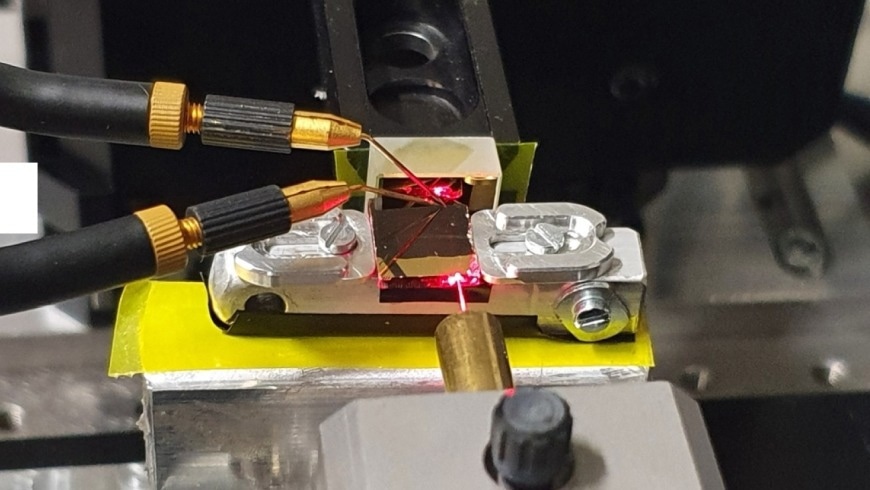Reviewed by Mila PereraOct 26 2022
Infrared (IR) detectors’ severe miniaturization seems to be vital for their integration into next-generation wearables, ultra-small satellites, and consumer electronics.

The experimental setup: A red alignment laser was used to visualize the beam path from the fiber into the optical waveguide and its reflection in a gold mirror. Two microprobes were used to contact the photoconductor, the size of which is in the subwavelength range. Image Credit: Empa
Up til now, IR detectors have been dependent on heavy (and costly) materials and technologies. A research group headed by Empa Researcher Ivan Shorubalko has successfully developed a profitable miniaturization process for IR spectrometers depending on a quantum dot photodetector. This can be incorporated on a single chip, as reported in the Nature Photonics journal.
Miniaturization of infrared spectrometers will result in their extensive use in consumer electronics, such as detecting hazardous chemicals, smartphones allowing food control, wearable electronics, and air pollution monitoring.
They could be utilized to simply and rapidly detect a few chemicals without necessitating laboratory equipment. Furthermore, they can be beneficial for detecting counterfeit medical drugs and for greenhouse gases like CO2 and methane.
A research group at Empa, ETH Zurich, EPFL, the University of Salamanca, Spain, the European Space Agency (ESA), and the University of Basel has now created proof-of-concept miniaturized Fourier-transform waveguide spectrometer integrating a subwavelength photodetector as a light sensor.
This invention comprises a colloidal mercury telluride quantum dot (Hg Te). It is consistent with reciprocal metal-oxide-semiconductor (CMOS) technology, as reported in the recent issue of Nature Photonics journal.
The consequent spectrometer displays a large spectral bandwidth and moderate spectral resolution ranging around 50 cm−1 at a total active spectrometer volume below 100 μm × 100 μm × 100 μm.
This ultra-compact spectrometer design enables the consolidation of optical-analytical measurement instruments into space devices and consumer electronics.
The monolithic integration of subwavelength IR photodetectors has a tremendous effect on the scaling of Fourier-transform waveguide spectrometers. But this may also be of great interest for miniaturized Raman spectrometers, biosensors, and lab-on-a-chip devices as well as the development of high-resolution snapshot hyperspectral cameras.
Ivan Shorubalko, Researcher, Empa
Journal Reference
Grotevent, M. J., et al. (2022) Integrated photodetectors for compact Fourier-transform waveguide spectrometers. Nature Photonics. doi.org/10.1038/s41566-022-01088-7.